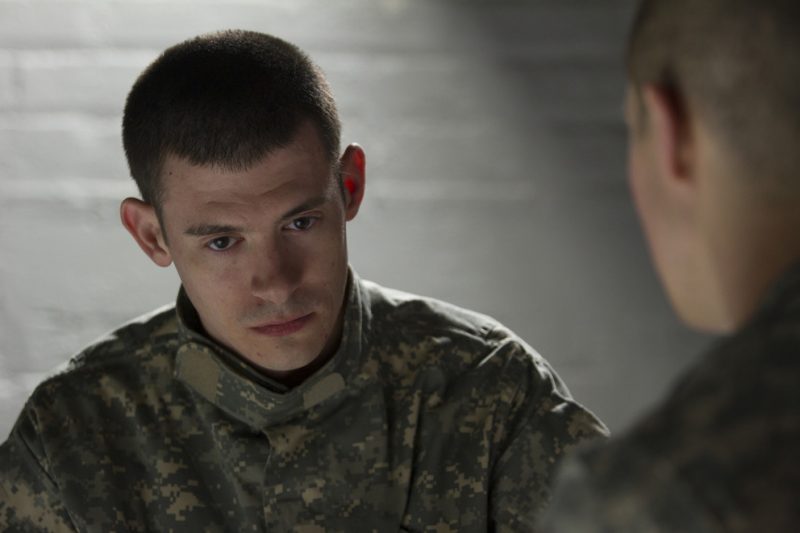Combat-Related Post Traumatic Stress Disorder — or Combat PTSD — is a serious but poorly understood condition that affects hundreds of thousands of American military veterans. Along with Traumatic Brain Injury (TBI) and Clinical Depression, PTSD can be one of the most pervasive “invisible injuries” faced by veterans who have been wounded physically, psychologically, or both.
According to Amy Marshall, associate professor of psychology at Penn State, when people suffer from Combat PTSD, there may be major changes in behavior and personality with no outward change in their appearance. Symptoms can include recurring nightmares and flashbacks of events, insomnia, feelings of anger or numbness, and the sense of being constantly on guard. Some studies suggest that twenty percent or more of soldiers returning from Iraq and Afghanistan suffer from PTSD; however, most researchers acknowledge that the stigma of mental illness, among other factors, makes accurate PTSD statistics difficult to obtain. Nevertheless, with an estimated twenty veterans committing suicide daily, there is a sense of urgency about finding solutions.
Are we getting better at understanding and treating Combat PTSD? Marshall is cautiously optimistic. “Our understanding of how to treat PTSD has evolved considerably over time,” she explains. “Currently,cognitive-behavioral therapies have the greatest degree of support for their efficacy.” This approach includes exposure therapy, where the patient is exposed to repeated experiences of the stressful stimuli, and cognitive processing therapy, which teaches patients to identify their trauma-related beliefs that influence emotions and decision-making, so they can gain control over angry and impulsive responses. Along with medication and virtual-reality simulations, there are more therapeutic tools now than ever before to help those with PTSD.
The scope of the problem has to be understood in context, Marshall notes. “Most people have been exposed to potentially traumatic events, but only a small percentage develop PTSD” she says. “In the general population, two to four times more women have PTSD than men, and military service results in an extremely small proportion of cases, even though military servicepersons are at high risk for developing PTSD given the nature of their work.”
“Currently, cognitive-behavioral therapies have the greatest degree of support for their efficacy.” — Amy Marshall, associate professor of psychology at Penn State.
PTSD is best understood as a continuum, adds Marshall. “Anyone who has experienced a potentially traumatic event can exhibit some symptoms of PTSD, and people vary in the severity or intensity of those symptoms.” In fact, she adds, “Almost everyone will respond to trauma in ways that look like PTSD, but most get back to their normal functioning with time. For people with PTSD, that recovery is delayed — sometimes for months and sometimes for decades — and they continue to act and feel as if the trauma just occurred a few days ago.”
The types of stressors that can give rise to PTSD vary tremendously, says Marshall, but they all have in common themes of death (actual or threatened), serious injury, or sexual violence. “People might be surprised to learn that you don’t need to directly experience such events,” she explains. “Rather, witnessing or learning about traumatic events that have occurred to others can also lead to PTSD.” This may happen especially with repeated exposure, as in the case of first responders or police officers.
Research is shedding new light on previously unknown risk factors for suicide among veterans. “Even though suicide rates are extremely high among military veterans with PTSD, a recent study demonstrated that the strongest predictor of suicide among veterans was exposure to childhood trauma,” Marshall notes. “This finding suggests that we are not doing a good enough job of identifying trauma survivors early on and keeping them from being traumatized again.”
Can people suffering with Combat PTSD expect to recover fully and return to their pre-trauma level of functioning? “I believe that is a realistic goal if — and there is always an if — they can find a skilled therapist and if they put in a great deal of effort and hard work,” says Marshall. “Therapy for PTSD is extremely difficult, but also extremely helpful. The hallmark symptom of PTSD, which also drives the other symptoms, is avoidance of anything resembling the traumatic events. Therefore, the last thing someone with Combat PTSD wants to do is go to therapy to focus on the trauma. Finding the motivation to do so, and to stick with it, is oftentimes the greatest challenge.”
An enormous push has been made through the Veterans Administration system to train all clinicians in the proper implementation of these therapies. But our challenge, says Marshall, is “finding more effective ways to get individuals into treatment and to keep them there when therapy becomes very difficult.”
Amy Marshall, Associate Professor of Psychology, can be reached atadm11@psu.edu
